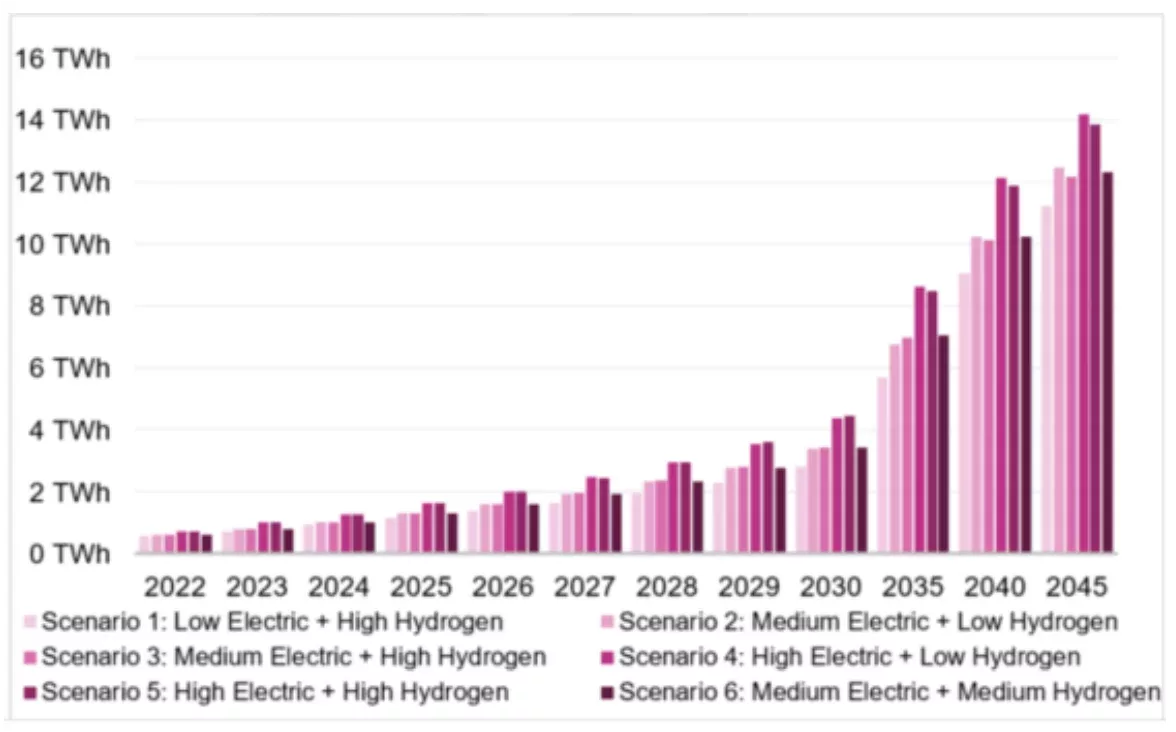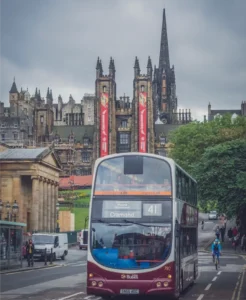The Scottish Government has published a new report on the renewable energy requirements projected to be needed for the transport sector between now and 2045.
It says the key finding from the report is that the amount of electricity and hydrogen the transport system is expected to need is well within the limits of what the energy sector is expected to generate. In summary:
The total demand forecast for hydrogen in Scotland ranges from 0.43 to 1.19 Terawatt Hours (TWh) in 2030 and 4.45 to 14.83 TWh in 2045 across all six scenarios outlined in the report.
As a proportion of Scotland’s hydrogen production ambition, transport demand is forecast to range from 1.5 to 4.5% in 2030 and 4 to 14% in 2045.
The Scottish Government says this means, that if production ambitions are achieved, there would be a significant volume of hydrogen available for other domestic applications and for export.
The total annual demand for electricity in 2022 for all transport modes combined varies between 0.6 and 0.7 TWh, increasing to between 2.8 and 4.4 TWh in 2030, before reaching a peak of between 11.2 and 14.2 TWh in 2045.
“To put those demand estimates into context, the estimated available capacity of renewable electricity is expected to increase from around 40 TWh now to around 70 TWh in 2030, and up to 90 TWh in 2045,” it says in a statement. “These are the first forecasts to be developed to show the renewable energy requirements of the transport sector in Scotland. The report therefore provides new insight for the energy and transport sectors to consider together. The scale of change required for all vehicles in Scotland to be powered by renewable energy means that strong and strategic action across sectors is needed.”
In addition to the main report, Transport Scotland has published an interactive tool so that transport planners, energy professionals and investors can see how different scenarios and vehicle types interact – and how changes in certain assumptions can impact the forecasts. There are also closer looks at the hydrogen demand forecast in the Highlands, Fife, and Dumfries and Galloway, with all the methods being set out so analysis can be replicated for other areas too.
Minister for Transport Jenny Gilruth said, “I’m pleased that we have published these new forecasts for renewable energy requirements across the transport sector. I know that there are businesses interested in investing in hydrogen transport who have been seeking more information on likely supply. This report fills an important gap in our understanding and will help the public and private sector accelerate towards renewables at pace.
“Battery electric is undoubtedly the way forward for smaller vehicles – but for our heavy duty transport needs, it’s clear that unlocking the potential of hydrogen is critical. We need new levels of ambition and that is why we’re consulting on a new Hydrogen Action Plan.
“Within that plan we propose creating a Hydrogen for Transport Consortium to co-design a pathway to finance and build a network of hydrogen refuelling sites and develop economies of scale. The reports we have published today highlight the value of our hydrogen proposals and I look forward to working with industry as part of our ‘Mission Zero’ for transport.”
Professor Sir Jim McDonald, University of Strathclyde and co-chair of the Scottish Energy Advisory Board added, “This publication is timely as we turn our attention to the delivery of decarbonisation commitments agreed at COP26 and I welcome the insights it provides into transport’s energy needs in Scotland.
“The details and analysis presented in this work highlight the huge potential Scotland has with respect to renewable energy and the critical impacts this will have on the transport sector as well as benefitting from the sector’s participation in addressing climate change. It also emphasises the importance of collaboration across both the energy and transport sectors as we transition to a Net-Zero economy.”
Barry Carruthers, Hydrogen Director at ScottishPower, commented, “This report confirms the need to continue to grow our renewables industry at pace to realise our ambitions of creating a zero emission transport sector across the country. We need more homegrown green electricity to power not just the battery-powered electric vehicle revolution, but to ensure clean, green hydrogen is a viable clean fuel alternative for larger vehicles as well as rail, air and shipping. This will be the transformation of transportation and knowing what’s needed to make that happen is the first stepping stone.”
Ben Todd from Ballard Motive Solutions, based at the Michelin Scotland Innovation Parc in Dundee, said, “Greenhouse gas emissions from heavy-duty transport, such as freight, are increasing at a faster rate than any other sector. The Scottish Government’s drive to decarbonise transport through close collaboration between Government, industry and academia, will help accelerate the adoption of hydrogen-powered solutions for this hard-to-abate segment.”
The report can be accessed here.
(Graphic – Transport Scotland)
(Picture – Yay Images)





















